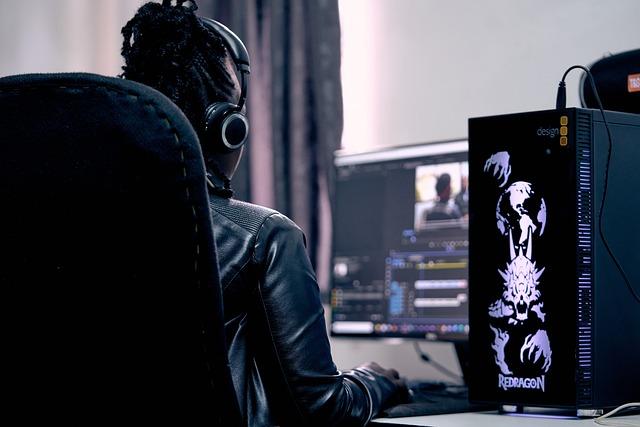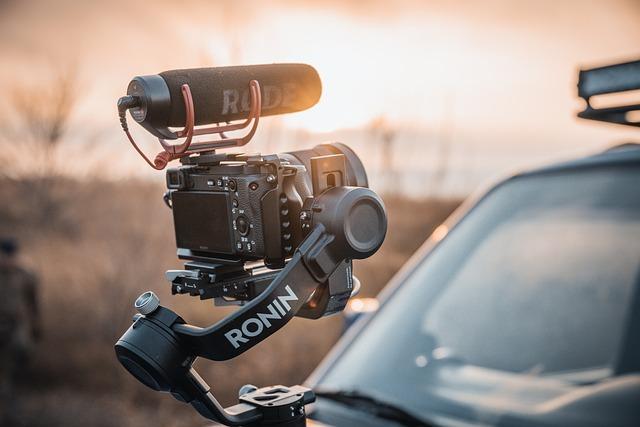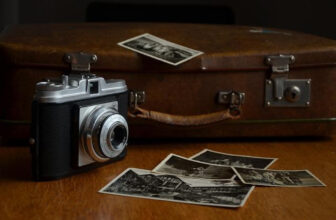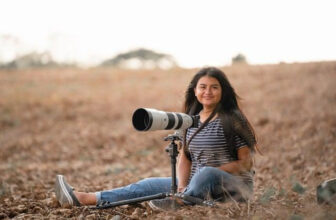Perfecting Your Portrait Photos: Expert Tips
GoogleAds

Portrait photography is a captivating art form that requires a delicate balance of technical skill and artistic vision. Whether you’re a seasoned pro or just dipping your toes into the world of photography, mastering the art of capturing the perfect portrait photo can be a rewarding challenge. In this article, we’ll explore expert tips and tricks to help you hone your skills and create stunning portraits that truly capture the essence of your subject. From lighting and composition to posing and post-processing, we’ll cover all the essential elements to help you perfect your portrait photos.
Lighting: The Key to Capturing Flawless Portraits
When it comes to capturing flawless portraits, one of the most important elements to consider is lighting. Proper lighting can make all the difference in the world when it comes to creating stunning and memorable portrait photos. Whether you’re a beginner or a seasoned pro, mastering the art of lighting is crucial for achieving professional-looking results.
There are several key factors to keep in mind when setting up your lighting for portrait photography. One of the first things to consider is the quality of light. Soft, diffused light is generally the most flattering for portraits, as it helps to minimize harsh shadows and create a more even, natural-looking tone. You can achieve this type of lighting by using a softbox or a diffuser to soften the light source.
Another important factor to consider is the direction of light. The angle at which light hits your subject can drastically affect the overall look of the portrait. For more flattering results, it’s often best to position the light source at a slight angle to the side of your subject, rather than directly in front of them. This can help to create depth and dimension in the image.
Additionally, the intensity of the light can play a big role in the final outcome of your portrait photos. Depending on the look you’re going for, you may want to adjust the brightness of your light source accordingly. Experimenting with different levels of intensity can help you achieve the desired mood and atmosphere in your portraits.
mastering the art of lighting is essential for capturing flawless portraits. By paying attention to factors such as light quality, direction, and intensity, you can take your portrait photography to the next level and create stunning images that truly stand out. Remember, practice makes perfect, so don’t be afraid to experiment and try new techniques to find what works best for you.
Posing Techniques for Natural and Flattering Results
When it comes to taking portrait photos, mastering posing techniques is essential for achieving natural and flattering results. Whether you’re a professional photographer or just someone who loves snapping pictures, these expert tips will help you perfect your portrait photos.
One key tip is to focus on creating a relaxed and natural pose for your subject. Encourage them to relax their shoulders, soften their facial expressions, and avoid stiff or forced poses. This will help them feel more comfortable in front of the camera, resulting in a more genuine and flattering portrait.
Another important technique is to pay attention to body positioning. Positioning your subject at a slight angle to the camera can create a more flattering silhouette and help slim down the body. Experiment with different angles and poses to find the most flattering position for your subject.
Lighting also plays a crucial role in capturing natural and flattering portrait photos. Soft, diffused lighting can help minimize harsh shadows and create a flattering glow on your subject’s face. Consider using natural light or investing in a softbox for more professional results.
Lastly, don’t be afraid to experiment with different poses and angles to find what works best for your subject. Encourage them to move around, try different expressions, and have fun with the photoshoot. The more relaxed and natural your subject feels, the more natural and flattering the results will be.

Choosing the Right Background for Your Portrait
When it comes to capturing the perfect portrait photos, choosing the right background is crucial. The background sets the tone for the entire picture and can make or break the final result. Here are some expert tips to help you select the perfect backdrop for your portrait:
Consider the Mood: Think about the mood you want to convey in your portrait. Different backgrounds can evoke different emotions, so choose one that complements the overall feel you’re going for.
Avoid Clutter: A busy or cluttered background can distract from the main subject of the photo. Opt for a clean, simple backdrop that won’t take away from the person you’re photographing.
Use Natural Light: If possible, try to shoot your portrait photos outdoors in natural light. Natural light can create a soft, flattering effect that is hard to replicate with artificial lighting.
Experiment with Textures: Don’t be afraid to get creative with the background of your portraits. Textured walls, foliage, or even a simple fabric backdrop can add an interesting element to your photos.
| Background Type | Best Use |
|---|---|
| Plain colored wall | Great for headshots |
| Natural setting | Perfect for outdoor portraits |

Utilizing Props to Enhance Portrait Composition
When it comes to capturing stunning portrait photos, utilizing props can make a significant difference in enhancing the overall composition of your images. Props can help add depth, context, and visual interest to your portraits, transforming them from ordinary to extraordinary. Here are some expert tips on how to perfect your portrait photos using props:
Choose Props Wisely: Select props that complement your subject and enhance the mood or message you want to convey in your portrait. Consider the color, shape, size, and texture of the props to ensure they harmonize with the overall composition of the image.
Keep it Simple: Avoid overwhelming your portrait with too many props. Limiting the number of props in your composition can prevent distractions and ensure that the focus remains on your subject. Remember, sometimes less is more.
Experiment with Different Props: Don’t be afraid to think outside the box and try incorporating unconventional props into your portrait photos. A simple object like a flower, hat, or piece of fabric can add a unique and creative touch to your images.
Consider the Setting: Take into account the location and background of your portrait when choosing props. Props should harmonize with the surroundings and contribute to the overall storytelling aspect of the image. Pay attention to lighting and composition to ensure your props enhance rather than detract from the portrait.

Editing Tools and Techniques for Professional Looking Portraits
When it comes to creating professional-looking portraits, editing tools and techniques play a crucial role in enhancing the overall quality of the photos. Whether you are a beginner or an experienced photographer, perfecting your portrait photos requires a good understanding of the various editing tools available at your disposal.
One of the key editing tools that can help elevate your portrait photos is Adobe Photoshop. With its wide range of features and capabilities, Photoshop allows you to retouch and enhance your photos with precision. From adjusting colors and tones to removing blemishes and imperfections, Photoshop gives you the flexibility to fine-tune every aspect of your portraits.
Another popular editing tool among professional photographers is Lightroom. Lightroom offers a user-friendly interface that makes the editing process seamless and efficient. With its powerful editing presets and filters, you can easily enhance the lighting, contrast, and sharpness of your portraits to achieve a polished look.
When it comes to advanced editing techniques, portrait photographers often turn to techniques such as frequency separation and dodge and burn. Frequency separation allows you to separate the texture and color information in your photos, making it easier to retouch skin while maintaining a natural look. On the other hand, dodge and burn techniques help you bring out the highlights and shadows in your portraits for a more dynamic and visually appealing result.
In addition to editing tools, mastering the art of portrait composition is essential for creating striking and impactful photos. Pay attention to elements such as lighting, framing, and posing to create a visually appealing composition that highlights the subject’s features and personality. By combining the right editing tools and techniques with strong composition skills, you can elevate your portrait photos to the next level and create professional-looking images that stand out.

Understanding the Importance of Facial Expressions in Portraiture
In the realm of portrait photography, mastering the art of capturing facial expressions is essential for creating compelling and impactful images. The subtle movements of the face can convey a wide range of emotions, adding depth and personality to a portrait. is key to perfecting your portrait photos.
One of the first things to consider when focusing on facial expressions in portraiture is the use of the eyes. The eyes are often referred to as the windows to the soul, and for good reason. They can convey a wealth of emotions, from joy and excitement to sadness and contemplation. When capturing a portrait, pay close attention to the direction and intensity of the subject’s gaze. A strong, direct gaze can create a sense of connection and intimacy in the photograph.
Another crucial aspect to consider when working with facial expressions in portraiture is the importance of non-verbal cues. The positioning of the lips, eyebrows, and overall facial muscles can subtly influence the mood and tone of a portrait. A slight smile can convey warmth and approachability, while a furrowed brow can suggest tension or concentration. Experiment with different expressions to see how they impact the overall feel of the image.
When capturing facial expressions in portraiture, lighting plays a significant role in highlighting the contours and features of the face. Soft, diffused lighting can help to minimize harsh shadows and create a more flattering look. Consider experimenting with different lighting setups, such as using a reflector or diffuser, to achieve the desired effect. Pay attention to the way light interacts with the subject’s face, emphasizing their unique features and expressions.
mastering the art of capturing facial expressions in portraiture is essential for creating powerful and engaging images. By paying attention to the eyes, non-verbal cues, and lighting, you can elevate your portrait photos to new heights. Remember to experiment, practice, and above all, have fun capturing the beauty and complexity of the human face through photography.
Equipment Essentials for Portrait Photography
When it comes to capturing stunning portrait photos, having the right equipment is essential. Whether you’re a seasoned professional or just starting out, investing in the proper gear can make a world of difference in the quality of your images. To help you perfect your portrait photos, we’ve rounded up a list of must-have equipment essentials that every photographer should have in their toolkit.
1. Camera Body
The first and most crucial piece of equipment you’ll need for portrait photography is a reliable camera body. Look for a camera with a high-resolution sensor, good low-light performance, and a range of customizable settings. Popular options include the Canon EOS 5D Mark IV and the Nikon D850.
2. Lens Selection
When it comes to lenses for portrait photography, the most popular choice is a fast prime lens with a wide aperture, such as a 50mm f/1.8 or an 85mm f/1.4. These lenses are perfect for creating beautiful bokeh effects and capturing sharp, detailed portraits. Additionally, a versatile zoom lens like a 24-70mm f/2.8 can be handy for capturing a variety of different shots.
3. Lighting Equipment
Good lighting is key to creating stunning portrait photos. In addition to natural light, investing in artificial lighting equipment can take your images to the next level. Consider purchasing a quality flash or strobe, as well as modifiers like softboxes or umbrellas to control and manipulate the light to achieve the desired effect.
4. Tripod
A sturdy tripod is a must-have for portrait photography, especially when shooting in low light or when using slower shutter speeds. Look for a tripod with adjustable legs and a ball head for easy positioning and stability. This will help ensure that your photos are sharp and free from camera shake.
5. Accessories
Don’t forget about the little extras that can make a big difference in your portrait photography. Consider investing in accessories like a remote shutter release, a reflector for bouncing light, and a camera bag to keep all your gear organized and protected. These accessories can help you capture the perfect shot every time.

Mastering Composition: Framing and Angles for Stunning Portraits
When it comes to capturing stunning portrait photos, mastering composition is key. Framing your subject and choosing the right angles can make all the difference in creating a captivating image that truly stands out. In this post, we will delve into expert tips on how to perfect your portrait photos through framing and angles.
Framing Your Subject:
- Consider using natural frames, such as archways or windows, to add depth to your composition.
- Experiment with different framing techniques, like placing your subject off-center or using leading lines to draw the viewer’s eye.
- Don’t be afraid to get up close and personal with your subject for a more intimate and engaging portrait.
Choosing the Right Angles:
- Try shooting from different angles, such as eye-level, high above, or from below, to find the most flattering perspective for your subject.
- Utilize natural light to highlight facial features and create depth in your portraits.
- Experiment with unconventional angles, like shooting from behind or the side, for a unique and artistic touch.
| Angle | Effect |
|---|---|
| Eye-level | Creates a personal connection with the viewer |
| High above | Empowers the subject and adds drama |
| From below | Highlights facial features and adds a sense of dominance |
By mastering composition through framing and angles, you can take your portrait photography to the next level. Remember to experiment, be creative, and don’t be afraid to break the rules to capture truly stunning and unique portrait photos.
Q&A
Q: What are some essential tips for capturing the perfect portrait photo?
A: Some essential tips for capturing the perfect portrait photo include choosing the right lighting, finding a strong composition, and ensuring your subject feels comfortable and confident.
Q: How can lighting affect the outcome of a portrait photo?
A: Lighting plays a crucial role in portrait photography by enhancing the subject’s features, creating mood, and adding depth to the image. Soft, diffused lighting is often preferred for flattering portraits.
Q: What are some composition techniques that can improve a portrait photo?
A: Composition techniques such as the rule of thirds, leading lines, and framing can help create visually appealing and dynamic portrait photos. Experimenting with different angles and perspectives can also add interest to your photos.
Q: How important is it to make your subject feel at ease during a portrait photo shoot?
A: Making your subject feel comfortable and relaxed is key to capturing genuine expressions and emotions in portrait photos. Building a rapport with your subject and providing clear direction can help create a positive and collaborative atmosphere.
Q: Are there any post-processing tips for enhancing portrait photos?
A: Post-processing techniques such as adjusting exposure, color temperature, and contrast can help enhance the overall look of a portrait photo. It’s important to exercise moderation and make subtle edits to maintain the authenticity of the image.
In Retrospect
capturing the perfect portrait photo requires a combination of technical skill, creativity, and attention to detail. By following the expert tips outlined in this article, you can elevate your photography game and take your portrait photos to the next level. Remember, practice makes perfect, so don’t be afraid to experiment and push the boundaries of your creativity. With dedication and persistence, you’ll be well on your way to creating stunning portrait photos that truly capture the essence of your subjects. Thank you for reading and happy shooting!
GoogleAds







